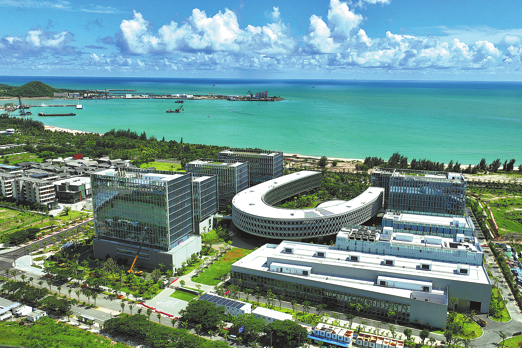Time for change in the Middle East


What was a central demand — the release of the Israeli hostages — has now been fulfilled, but the US peace plan still hinges on broader issues beyond a ceasefire. It encompasses the broader Middle East. Hence, the US' maximum pressure on Hamas and its embrace of the positions of major Arab states, led by Saudi Arabia, Qatar and Egypt.
Nonetheless, the complex peace plan is ridden with caveats and the old US stance on the Middle East is crumbling.
Since 1945, the US' hegemony in the Middle East has relied on oil purchases, weapons sales and regime change. In diplomacy, Washington has favored bilateral peace treaties between Israel and Egypt (1979), Israel and Jordan (1994), and the Oslo Accords between Israel and the Palestinian Authority (1993-95).
Since the incumbent president's first term, the US has been building on the Abraham Accords (2020-21) — a series of agreements to normalize relations signed in 2020 by Israel and several Arab states, comprising a general declaration along with bilateral agreements between Israel and the United Arab Emirates, Bahrain and Morocco.
But arms sales are the key to the US' hegemony. For its allies, the US provides 60-80 percent of their lethal imports (Israel, Kuwait and Saudi Arabia for example).For the rest, it supplies 50-60 percent of the total lethal imports (the UAE, Iraq and Qatar for instance).
Additionally, the US' hegemony relies on aid dependency. Between 1946 and 2023, Washington provided a whopping $373 billion in foreign assistance for the Middle East. Before the Gaza catastrophe, the bulk of the aid was steered to just a few countries: Israel ($139 billion), Egypt ($83b), Iraq ($70b) and Jordan ($24b).
Since the Middle East is the largest regional recipient of US aid, the impact should be reflected in increasing security and rising per capita income. Yet the net effect has been precisely the opposite. Worse, the military symbiosis between the US and Israel has triggered devastating spillovers into adjacent Arab states. This severe destabilization has been accompanied by lost years, even decades, with no increase in per capita income in the US aid-receiving Middle East states.
Egypt had to cope with such stagnation from 1965 to 1975, and again in the early 2010s. Jordan lost a decade after the 1967 Six-Day War, during the first Palestinian uprising in the 1980s and again in the early 2010s. Even Israel has not been immune to stagnation periods, as evidenced by huge costs-of-living protests after the failure of the peace process.
In Iran and Iraq, adversities have escalated since their 1980-88 war in which the US supplied arms to both sides. In Iraq, where the US had backed the 1963 coup, per capita income in 2010 was where it had been in 1978. In Iran, which experienced the first US-UK-led regime change in 1953, Washington's sanctions prevented any growth in per capita income for a quarter of a century after the Islamic Revolution and again in the 2010s.
Following the 1949 US-led regime change, Syria's democratic path was undermined. As a result, Syria's per capita income before Oct 7, 2023, was the same as in 1981 — that is, 44 years ago. In Palestine, per capita income is now where it was in the early 1970s. In Yemen, per capita income is the same as it was 55 years ago.
In the past decade, China has emerged as a credible and peaceful intermediary in the Middle East. In addition to investing significantly in countries burdened by decades of US-engineered regime change and US interference, Beijing has made several remarkable diplomatic achievements. Leading Middle East states such as Egypt, Saudi Arabia and Turkiye build on the China-proposed Belt and Road Initiative in the region. Saudi Arabia remains one of China's largest oil suppliers, and it is selling oil in multiple currencies. For decades, the US fostered the divide between Saudi Arabia and Iran. Yet in March 2023, these two countries resumed diplomatic relations following a China-brokered deal. In July 2024, China played a vital role in fostering Palestinian national unity in the Beijing Declaration, signed by 14 different Palestinian factions. A month later, Beijing established a "second Silk Road" in the region. And in July 2025, China and Egypt expanded their bilateral cooperation across various economic sectors.
Since 1945, Washington destabilized and triggered regime change in Middle East countries to maintain its hegemony in the region. The post-Sept 11, 2001, wars alone have cost more than $8 trillion and over 1 million lives. In the past, US military aid to Israel amounted to $3.8 billion per year; since Oct 7, 2023, it has soared to $23 billion. In Gaza and Yemen, it has made US complicit to attacks which have claimed tens of thousands of lives. From 2023 to 2025, a quarter of a million Palestinians — mainly women and children — have been killed or wounded in Gaza, and more than 5.3 million people in the region have been displaced because of Israel's post-Oct 7, 2023, wars.
This catastrophe worsened by the US policies in the Middle East can be contrasted with China's initiatives focusing on de-escalation and stabilization, particularly through investment, development and modernization.
The time for decisive economic development, led by China and the Global South, has arrived. Obliteration wars are no solution to 21st century challenges.
The author is the founder of Difference Group and has served at the India, China and America Institute (US), Shanghai Institutes for International Studies (China) and the EU Centre (Singapore). He is also the author of The Obliteration Doctrine (2025) and The Fall of Israel (2024).
The views don't necessarily represent those of China Daily.
Today's Top News
- China to continue anti-dumping duties on EPDM imports
- Trump says war with Venezuela remains possible -- NBC News
- China urges Japan to stop challenging intl bottom line with its nuclear ambitions
- US arms sales to Taiwan a dangerous gambit: Editorial flash
- Taiwan opposition lawmakers announce plan to impeach Lai Ching-te
- Boosting consumption will be key in 2026






























